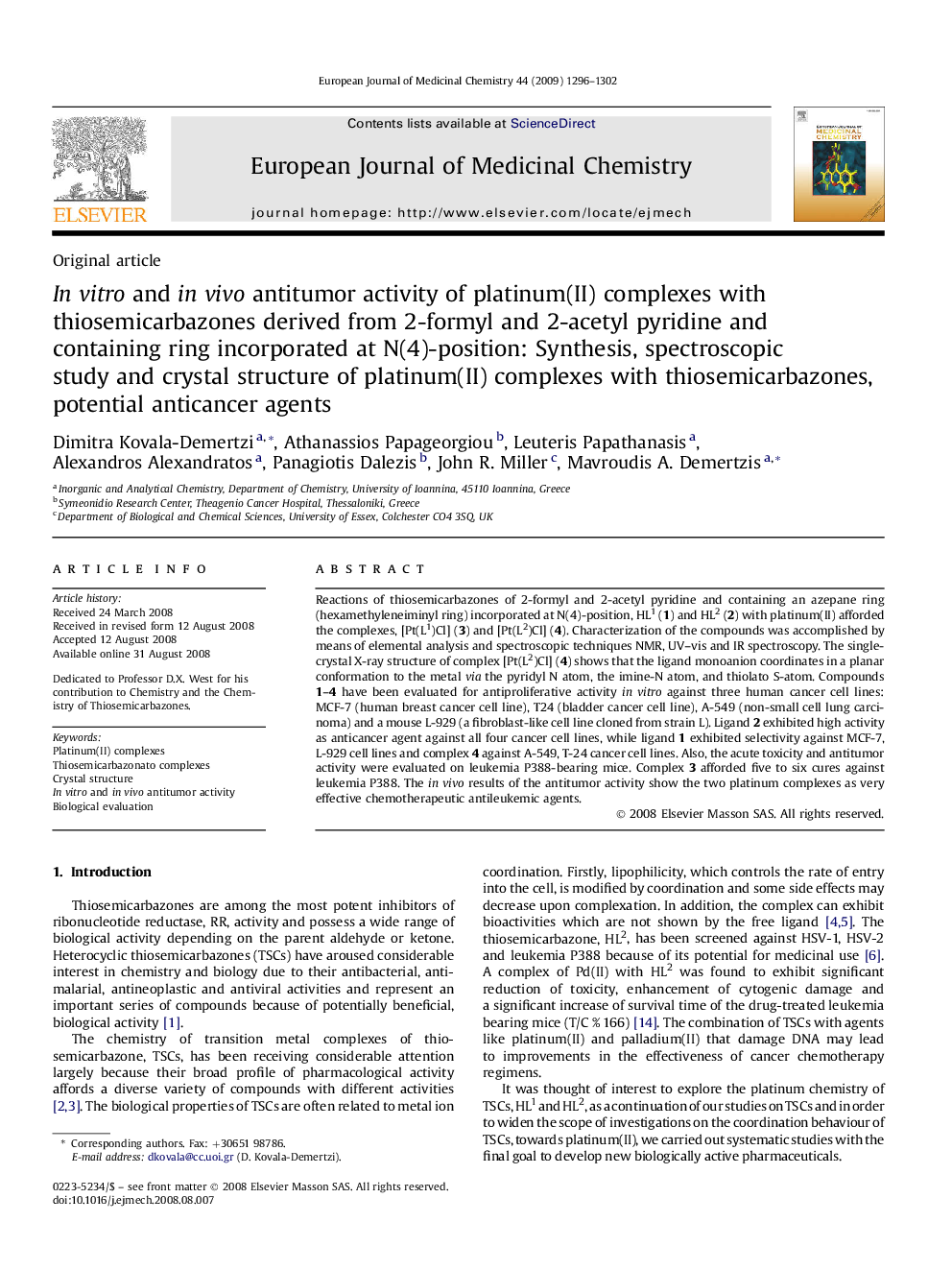| Article ID | Journal | Published Year | Pages | File Type |
|---|---|---|---|---|
| 1393339 | European Journal of Medicinal Chemistry | 2009 | 7 Pages |
Reactions of thiosemicarbazones of 2-formyl and 2-acetyl pyridine and containing an azepane ring (hexamethyleneiminyl ring) incorporated at N(4)-position, HL1 (1) and HL2 (2) with platinum(II) afforded the complexes, [Pt(L1)Cl] (3) and [Pt(L2)Cl] (4). Characterization of the compounds was accomplished by means of elemental analysis and spectroscopic techniques NMR, UV–vis and IR spectroscopy. The single-crystal X-ray structure of complex [Pt(L2)Cl] (4) shows that the ligand monoanion coordinates in a planar conformation to the metal via the pyridyl N atom, the imine-N atom, and thiolato S-atom. Compounds 1–4 have been evaluated for antiproliferative activity in vitro against three human cancer cell lines: MCF-7 (human breast cancer cell line), T24 (bladder cancer cell line), A-549 (non-small cell lung carcinoma) and a mouse L-929 (a fibroblast-like cell line cloned from strain L). Ligand 2 exhibited high activity as anticancer agent against all four cancer cell lines, while ligand 1 exhibited selectivity against MCF-7, L-929 cell lines and complex 4 against A-549, T-24 cancer cell lines. Also, the acute toxicity and antitumor activity were evaluated on leukemia P388-bearing mice. Complex 3 afforded five to six cures against leukemia P388. The in vivo results of the antitumor activity show the two platinum complexes as very effective chemotherapeutic antileukemic agents.
Graphical abstractFigure optionsDownload full-size imageDownload as PowerPoint slide
